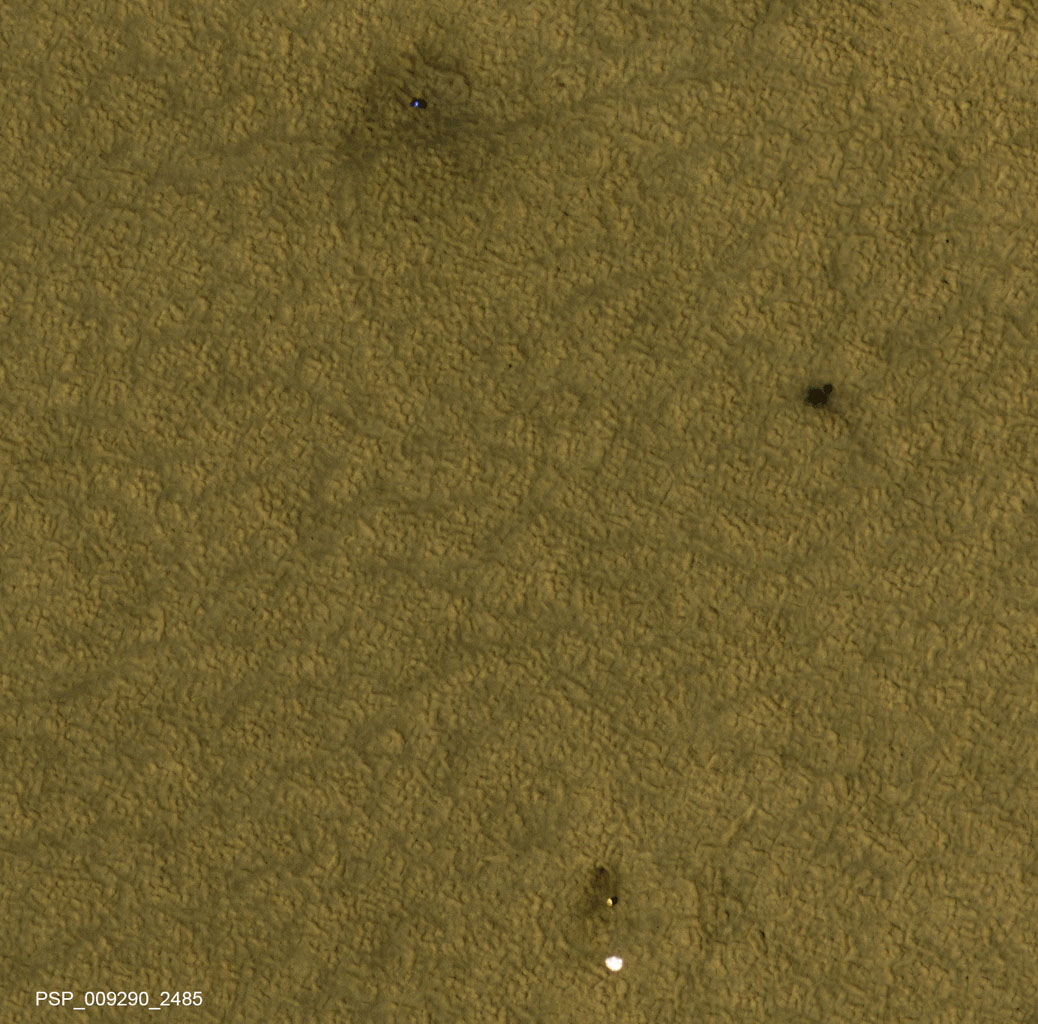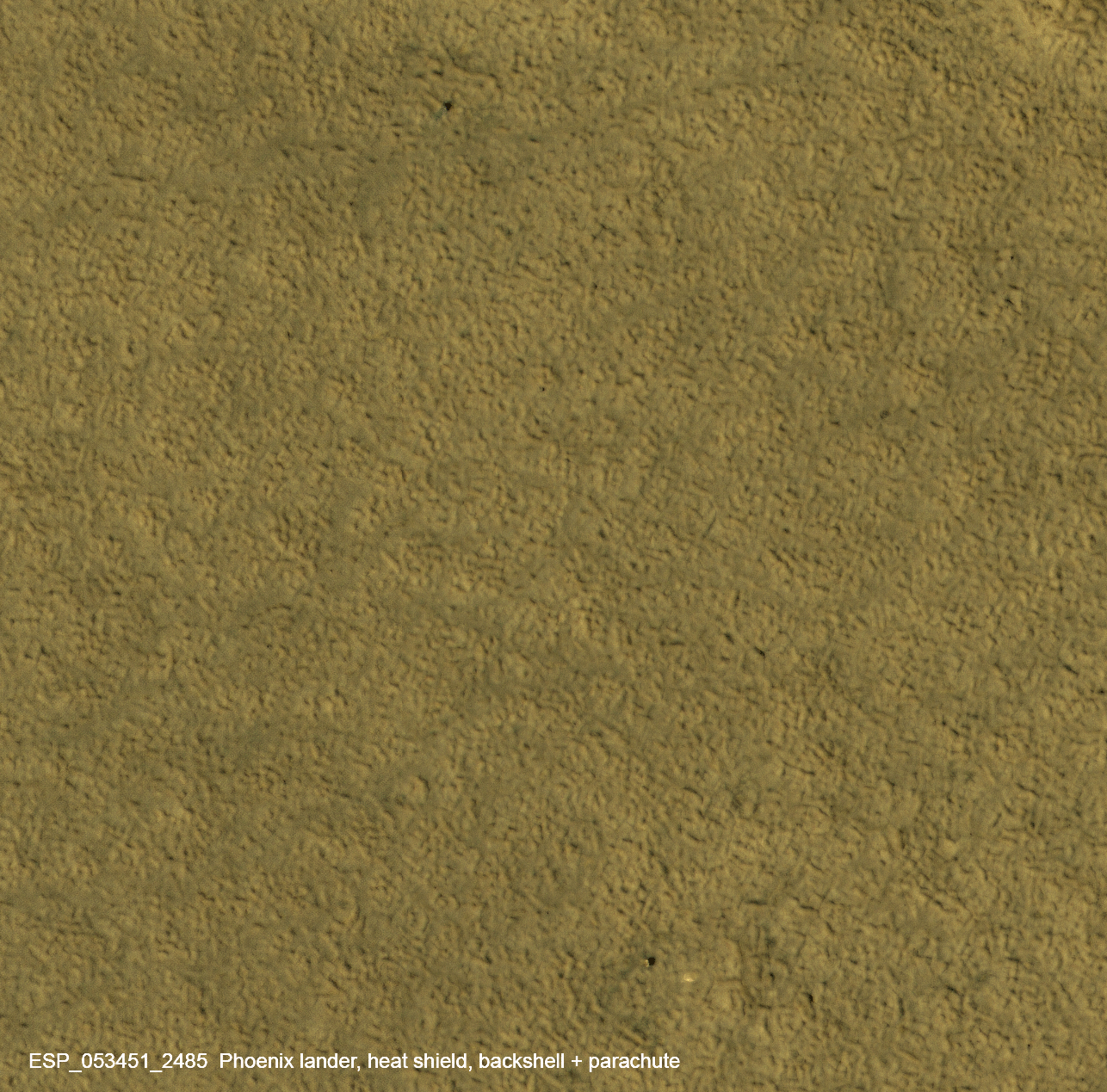Dust May Be Burying NASA's Phoenix Lander on Mars (Photos)

The Martian elements are coming for NASA's Phoenix lander.
A newly released photo suggests that dust is reclaiming the site near the Martian north pole where Phoenix touched down nearly 10 years ago.
"The Phoenix lander itself, plus its back shell and parachute, are still visible in the image taken Dec. 21, 2017, by the High Resolution Imaging Science Experiment (HiRISE) camera on NASA's Mars Reconnaissance Orbiter," NASA officials wrote in a description of the photo, which was released Tuesday (Feb. 20).
"But an animated-blink comparison with an image from about two months after the May 25, 2008, landing shows that patches of ground that had been darkened by removal of dust during landing events have become coated with dust again," they added.
Phoenix's mission was supposed to last 90 days, but the solar-powered lander kept operating in the frigid Martian north for more than five months, finally falling silent as winter took hold in November 2008.
Phoenix studied the Red Planet soil and atmosphere using several different instruments. The lander also confirmed the existence of water ice just below the Martian surface, in a shallow trench dug by its robotic arm.

Though Phoenix is long dead, the Mars Reconnaissance Orbiter (MRO) is still going strong after nearly a dozen years at the Red Planet. The $720 million mission launched in August 2005 and arrived in orbit around Mars in 2006.
Get the Space.com Newsletter
Breaking space news, the latest updates on rocket launches, skywatching events and more!
Since then, MRO has been performing a variety of tasks, such as searching for signs of past water activity on the Red Planet; scouting out promising sites for future landed missions, both robotic and crewed; and relaying data from surface craft such as Phoenix and the Opportunity and Curiosity rovers back to their handlers on Earth.
MRO's HiRISE camera, which took the newly released photo, can resolve features as small as a coffee table on the Martian surface. HiRISE has photographed Opportunity and Curiosity from orbit. And, in early 2015, NASA announced that the instrument had found the European Space Agency's Beagle 2 lander, which had been missing since its December 2003 touchdown on the Red Planet.
Follow Mike Wall on Twitter @michaeldwall and Google+. Follow us @Spacedotcom, Facebook or Google+. Originally published on Space.com.
Join our Space Forums to keep talking space on the latest missions, night sky and more! And if you have a news tip, correction or comment, let us know at: community@space.com.

Michael Wall is a Senior Space Writer with Space.com and joined the team in 2010. He primarily covers exoplanets, spaceflight and military space, but has been known to dabble in the space art beat. His book about the search for alien life, "Out There," was published on Nov. 13, 2018. Before becoming a science writer, Michael worked as a herpetologist and wildlife biologist. He has a Ph.D. in evolutionary biology from the University of Sydney, Australia, a bachelor's degree from the University of Arizona, and a graduate certificate in science writing from the University of California, Santa Cruz. To find out what his latest project is, you can follow Michael on Twitter.









